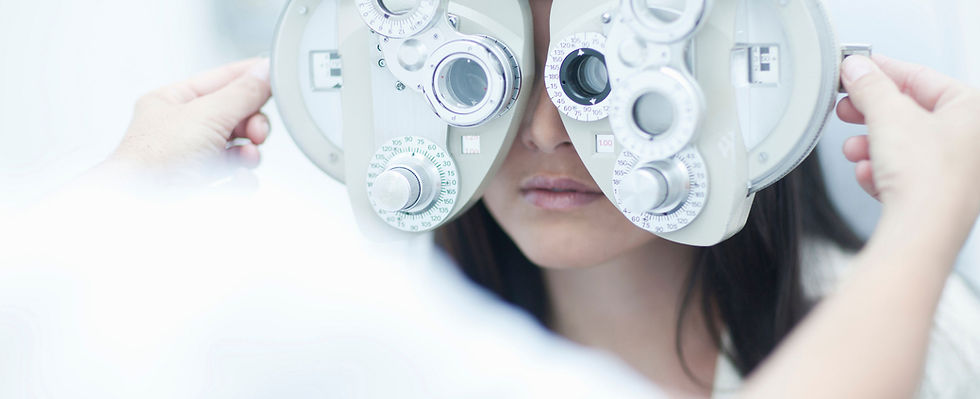
Complete Visual Assessment
Vision is much more than sight.
Sight refers to the clarity of an image and requires a healthy eye and correction of “refractive error” (a mismatch between the curve of the cornea at the front and the length of the eye), myopia (shortsightedness), hyperopia (long– sightedness), and astigmatism (a difference between the curve on the cornea making several points of focus instead of one). It can be corrected by wearing spectacles, contact lenses or laser treatment.
Vision is the interpretation and practical use of the clear image and involves peripheral information and an awareness of the space around you.Sometimes you need to pay attention to a lot of space such as when playing sport. At other times, lots of fine detail in a small space is required, such as when you are reading a book.
Judgement of how far away something is becomes very important considering we have two eyes in different positions. The eyes must aim and align themselves correctly at whatever we want to look at to avoid double vision and to allow for 3D. Once we know “where” to look, other muscles controlling our focussing must apply just enough pressure on the internal lens of the eye to make the image clear. The closer you bring something, the harder the muscles have to work to magnify detail.
The focusing and eye aiming muscle systems need to work as a team. The co-ordination, stamina and flexibility of these systems is called binocular vision. A thorough assessment of binocular vision is important for many reasons.
Symptoms such as vertigo, dizziness, lack of 3D, headaches, eyestrain, fatigue, poor concentration and trouble learning are all possible symptoms of binocular vision disorders.
Any major change to the vision system will always require the binocular system to adapt. For example, young children may have an eye turn and older adults may experience balance problems or eye movement problems when reading after one cataract is removed.
The assessment of binocular vision is not usually done behind a machine. It is best to understand how the eyes work in an environment that is as natural as possible. It can even be fun – especially when we test for 3D!
A complete visual assessment requires:
1. Thorough eye health assessment including viewing all the layers of the eye and taking intraocular pressure (IOP). Common conditions that are routinely screened for are:
-
Corneal scratches or ulcers
-
Dry eye / watery eyes
-
Macular degeneration
-
Optic nerve problems
-
Retinal detachment
-
Blood vessel health which would indicate possible overall health problems such as diabetes, high cholesterol and high blood pressure
2. Sight and refractive error assessment
3. Binocular vision assessment
4. Peripheral visual field assessment where indicated
5. Visual processing assessment where indicated









